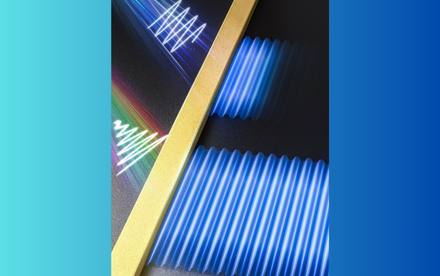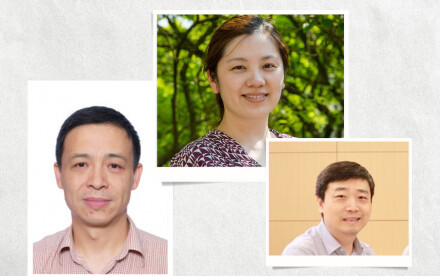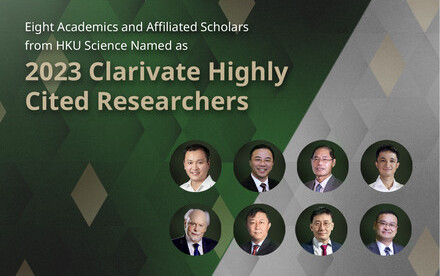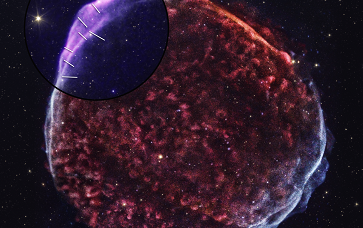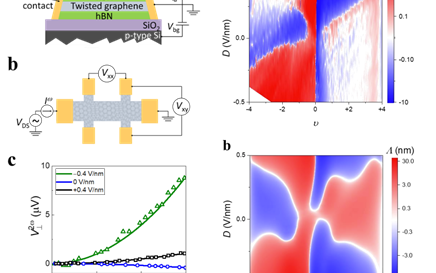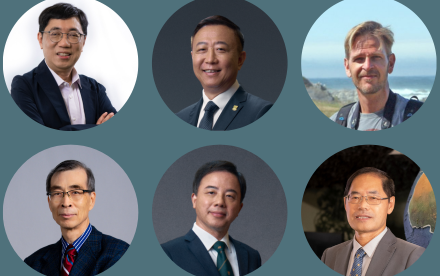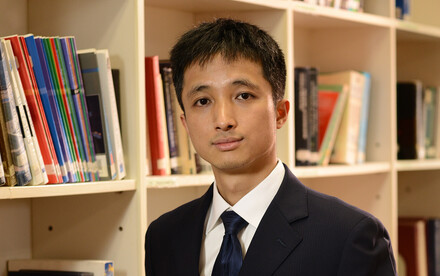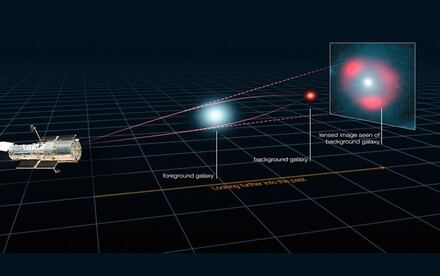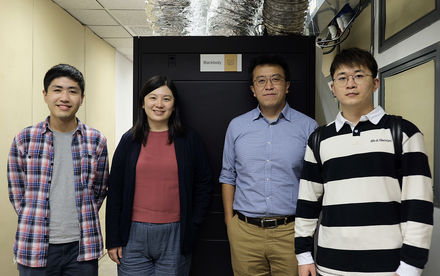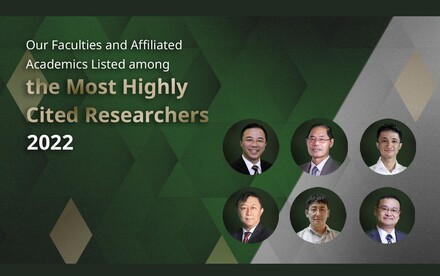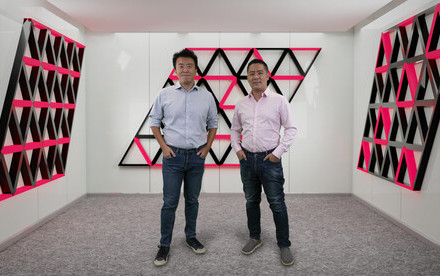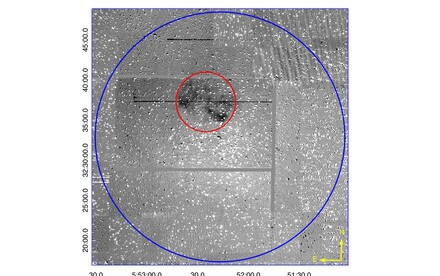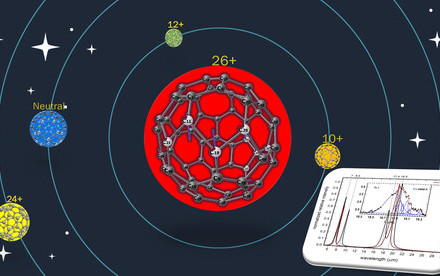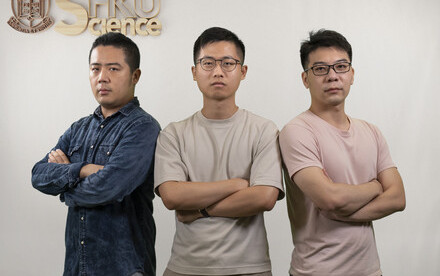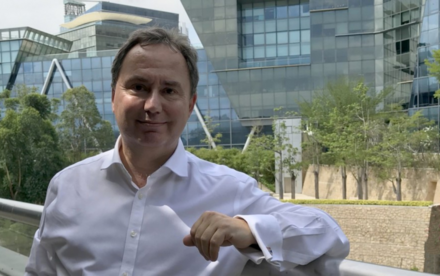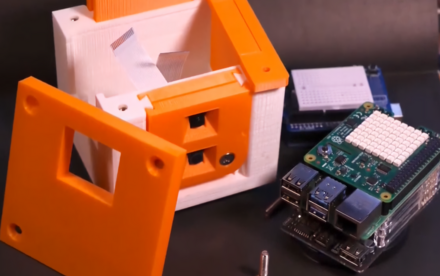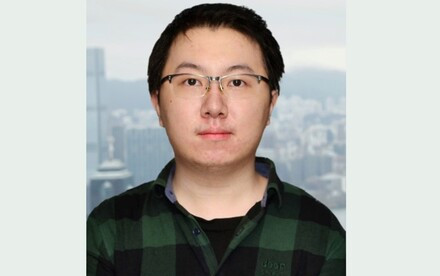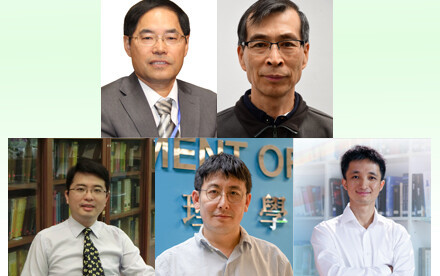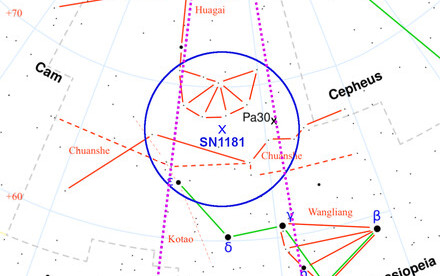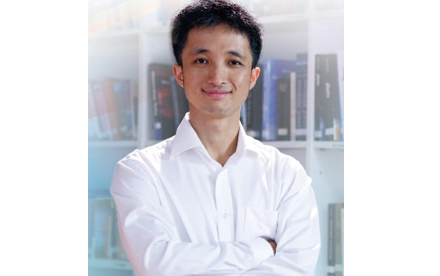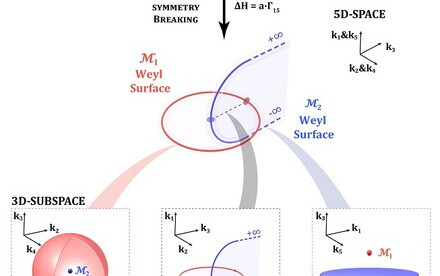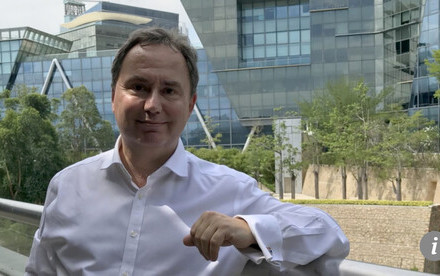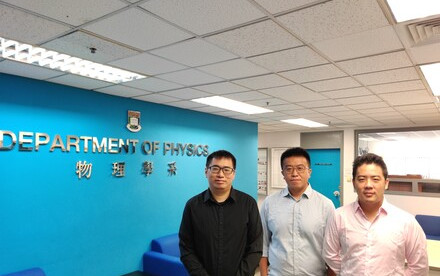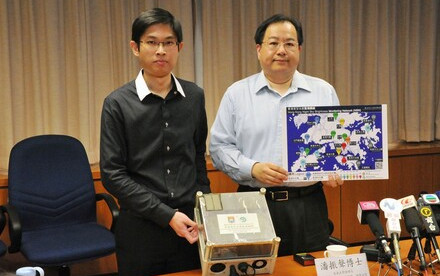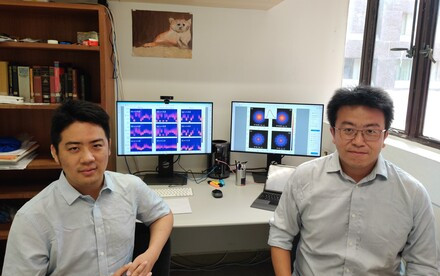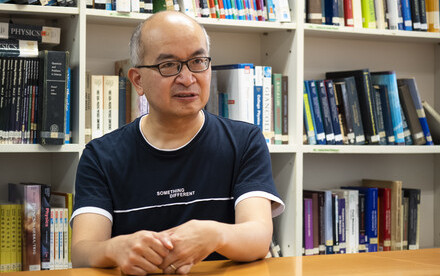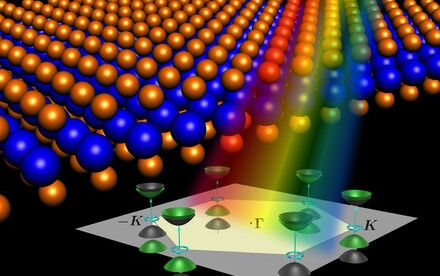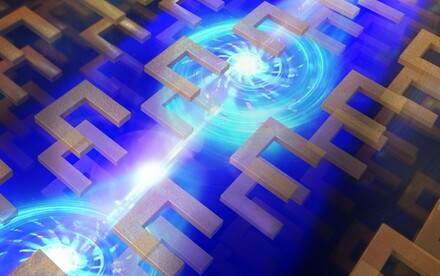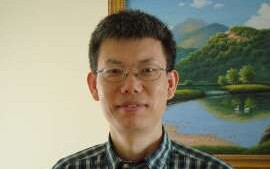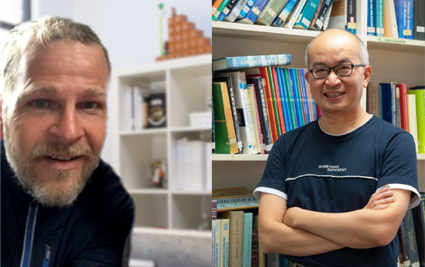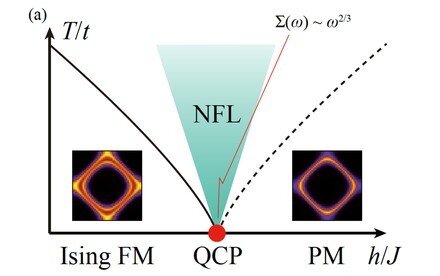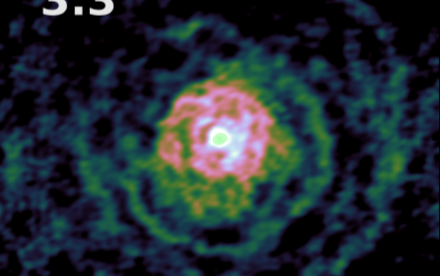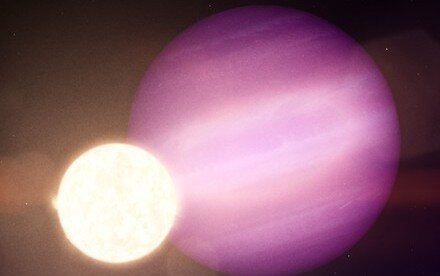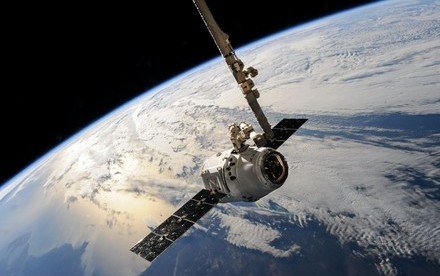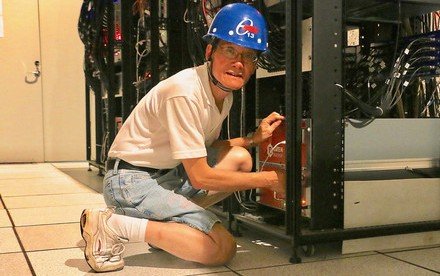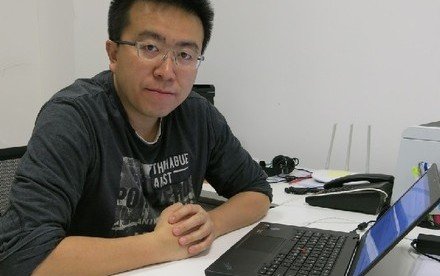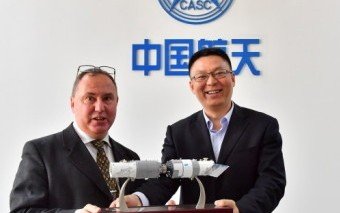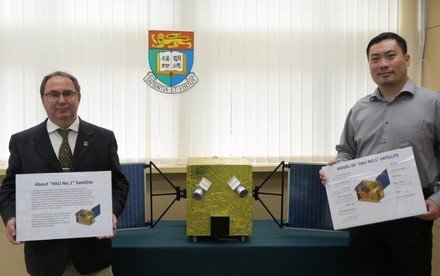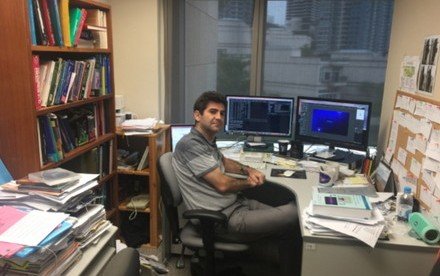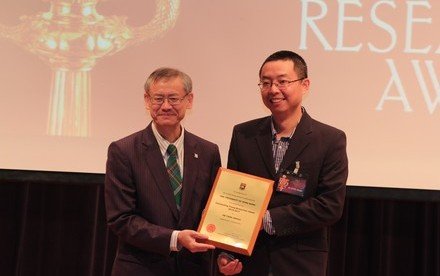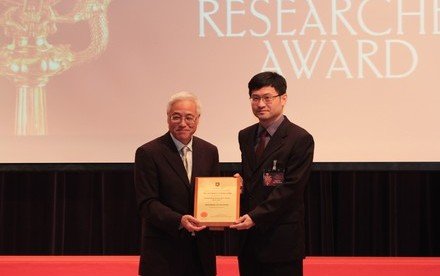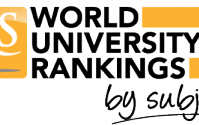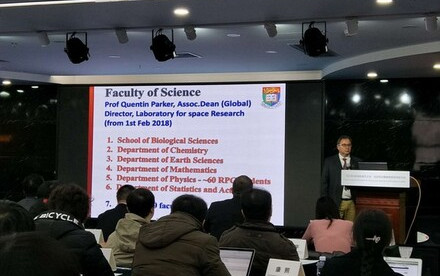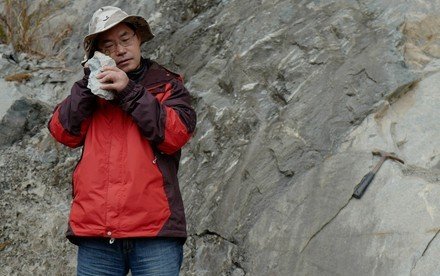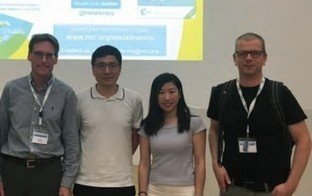Imagestacking two sheets of graphene – the 2D form of graphite, or the pencil at your hand – in which the carbon atoms form a hexagonal lattice and twist the top sheet out of alignment with the sheet below, yielding a periodic arrangement of atoms named moiré pattern (Figure 1). Do you expect that at a twisted angle of about 1o – people now call it ‘magic’ angle – the system could exhibit very exotic behaviours such as becoming an insulator, a metal or even a superconductor? Can you imagine the same carbon atom in your pencil (graphite) becoming a superconductor when twisted to a magic angle ? It indeed did as people discovered it in 2018, but why? A team of researchers from Department of Physics at The University of Hong Kong (HKU) and their collaborators, have succeeded in discovering a bona fide topological Mott insulator in twisted bilayer graphene model. The findings were recently published in a renowned journal Nature Communications.
The reasons behind these exciting phenomena are the frontiers of condensed matter physics and quantum material research, both experimental, theoretical and computational, usually in combined form. The basic understanding up to now is that once the two graphene sheets form moiré patterns at the magic angles, the energy bands of electrons in the twisted bilayer graphene become almost flat, in other words, the velocity of the electrons on the lattice becomes considerably lower than usual (comparing to that in single-layer graphene or graphite – our pencil), thus, the density of the electrons for this specific energy is tremendously large and the electrons can interact with each other strongly, giving rise to many unexpected states, e.g., the super-conductor, quantum Hall effect.
As a result, the behaviour of the electron is dominated by the mutual repulsive (Coulomb) interactions, which leads to the emergence of the exotic phases discussed above that do not exist in single layers of graphene or our pencil. At low temperatures (below 10 Kelvin), when the electron number is tuned to fill integer degrees of freedom of the flat bands, it means some of these bands are fully occupied while leaving the others fully empty, the system then would form an electrically insulating phase. Moreover, when the electron number deviates from the integer fillings, the system becomes either a metal (with low electrical resistivity) or a superconductor (zero resistance).
The phenomena of the magic angle twisted bilayer graphene are rich and profound, and physicists all over the world are now trying very hard to build proper microscopic models and find powerful computation methodologies to capture the mysterious properties of these models. Recently, a team from the Department of Physics at The University of Hong Kong which consists of Dr BinBin CHEN and Dr Zi Yang MENG, in collaboration with institutions from China and the US, succeeded in doing so with substantial progress. They have demystified the phase diagram of a model with a specific density of electrons and have identified the experimentally observed quantum anomalous Hall state, which is a novel quantum state with dissipationless edge current and is promising to be used as a basic component of your daily electronic gadgets, e.g. computer, smartphone.
Quantum anomalous Hall effect in effective twisted bilayer graphene model
We pay special attention to the ν=3 integer filling of the magic angle twisted bilayer graphene, since at the same filling case, the experiment shows that in the alignment of hexagonal boron nitride substrate, the electrons exhibit quantised Hall conductance σxy=e2/h without exerting a magnetic field – the so-called the quantum anomalous Hall (QAH) state. The QAH state is an interesting topological state with the bulk remaining insulating and the edge conducting electric current without dissipation! Till now, the mechanism of such QAH state is still under debate. In our work, we show that such an effect can be realised in a lattice model of twisted bilayer graphene in the strong coupling limit, and interpret the results in terms of a topological Mott insulator phase.
Specifically, we present our theoretical study on the mechanism of QAH driven by projected Coulomb interactions. By employing extensive density-matrix renormalisation group simulations on the interacting lattice model [Figure 2(a)], we identify a QAH phase with Hall conductance of σxy=e2/h , which is separated from an insulating charge density wave (stripe) phase by a first-order quantum phase transition at αc ≃ 0.12 [Figure 2(b)]. To calculate the Hall conductance in the QAH phase, we actually follow Laughlin’s gedankenexperiment. That is, by inserting a flux φ slowly from 0 to 2π through the hole of the cylinder, we observe exactly one electron is pumped from the left edge to the right, corresponding to the quantized Hall conductance of σxy=e2/h [Figure 3]. This work addresses the currently popular question on the origin of QAH in twisted bilayer graphene at ν=3 filling.

Figure 2. The honeycomb lattice model and phase diagram. (a) The Hamiltonian consists of two terms: the cluster charge operator Q, and the assisted hopping term T with alternating-sign structure. (b) The phase diagram contains two distinct insulating phases, i.e., the stripe phase for α < αc, and the QAH state for α > αc ≃ 0.12.Image credit: Dr Bin-Bin CHEN

Figure 3. Measurement of Hall conductance via flux insertion in the quantum anomalous Hall phase of the twisted bilayer graphene lattice model. Image credit: Dr Bin-Bin CHEN
The first instance of topological Mott insulator
The QAH state discovered from our model computation purely comes from the unique properties of the Coulomb interaction in the magic-angle twisted bilayer graphene system. And it is the first example of such an interaction-driven topological quantum state of matter that has been unambiguously discovered. The impact of such discovery is even beyond the area of magic-angle twisted bilayer graphene and have responded to a proposal in the generic topological state of matter a decade ago.
One of the reviewers, Dr Nick BULTINCK, a theoretical condensed matter theorist from the University of Oxford, made a high assessment of our work , “In his seminal paper, Haldane has shown that one does not need a magnetic field to have electrons occupy topologically non-trivial extended states which respond to Laughlin’s adiabatic flux insertion by producing a quantised Hall current. The results in this work show that one does not even need a kinetic energy term in the Hamiltonian for this to occur.”Indeed, not limited to the twisted bilayer graphene system, our work, for the first time, provides a Mott-Hubbard perspective for the QAH state driven by interactions only. Consequently, we clarified the long-standing mystery of the possible existence of the topological Mott insulator (TMI), the building block of the so-called information highway due to its ability to transfer electricity and information without loss.
The famous Chinese-American physicist, Professor Shou-Cheng ZHANG (1963-2018) and his collaborators first proposed such a TMI state about a decade ago, and subsequently, various interaction models have been studied by many theorists. Among all the previous works, the kinetic terms play a crucial role in the emergence of the QAH, and therefore, the obtained state should not be dubbed as “TMI”. However, our model completely turns off the kinetic part and contains only the interactions to produce the TMI state. In this regard, our work bridges the two essential fields in condensed matter physics: topology and the strong correlation. Further extension of our model construction and unbiased quantum many-body computations can be accessed from here.
Impact and future directions
As the number of transistors in the chips of our computer is doubled every 18 month, the heat they generated accompanied with the electricity transfer is becoming a gradually severe problem. The discovery of quantum anomalous Hall effect is of great significance, as there will no dissipation of energy and no heat is generated in the edge. In practise, such a state is the building block of the information highway and is promising to be applied in the next-generation chip.
The discovery of the QAH as the topological Mott insulator state in our model computation at filling v=3 sheds light on the phases that occur in magic-angle twisted bilayer graphene. Further careful modelling and computation on the lattice models of the system would reveal the mechanism of the superconductivity and provide better tunability of these exotic phenomena in this and other 2D quantum moiré material. The new findings also leave many open questions. For example, why the topological Mott insulator state is absent at other fillings of the band structure of the magic-angle twisted bilayer, how to properly study and compute the properties of the model away from integer fillings, etc? “The answers to these questions might help physicists to fully demystify the magic in this material and design more exciting phases of matter in this and other 2D quantum moiré materials currently being actively studied.” Dr Meng added, “And our research activity and expertise in 2D quantum materials can substantially boost this direction, which is the strategical research themes of HKU.”
About the research team
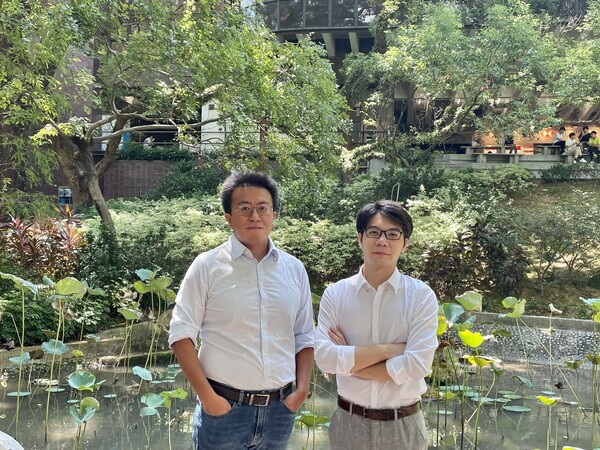
Dr Bin-Bin CHEN(on the right) is currently a postdoctoral fellow at Dr Meng’s group in the Department of Physics, HKU. His research focuses on the development of tensor network methods and the efficient simulations of quantum many-body systems starting from his PhD years in Beihang University.
Dr Zi Yang MENG(on the left) is an expert in Monte Carlo simulation of quantum many-body systems, and has recently made the breakthrough in quantum material research (see https://www.scifac.hku.hk/news/news-KT-Phase-TMGO ). He was awarded the “2020 Tianhe Star Award” by the National Supercomputer Center of China for his outstanding accomplishments and promotion of computational oriented research on the Tianhe supercomputer (see https://www.scifac.hku.hk/news/news-2020-Tianhe-Star-Award).
Other members:
Dr Wei LI of Institutes of Theoretical Physics, CAS and Beihang University, is an expert in tensor network simulation of quantum many-body systems, and has developed the state-of-the-art thermal tensor renormalization group methods applied in quantum magnetic graphene and correlated electronic systems studies.
Dr Jian KANG of Soochow University, and Dr Oskar VAFEK of Florida State University proposed the successful real-space lattice model of twisted bilayer graphene and conducted the theoretical analysis of the model.
The work was supported by the Research Grants Council of HKSAR, the Areas of Excellence “2D Materials Research: Fundamentals Towards Emerging Technologies” and the Ministry of Science and Technology of China and the National Science Foundation of China. We thank the Computational Initiative at the Faculty of Science and the Information Technology Services the HPC2021 supercomputer at The University of Hong Kong and the Tianhe Supercomputing platforms at the National Supercomputer Centers for their technical support and providing generous high-performance computing resources.
The journal paper at Nature Communication can be accessed from here.






